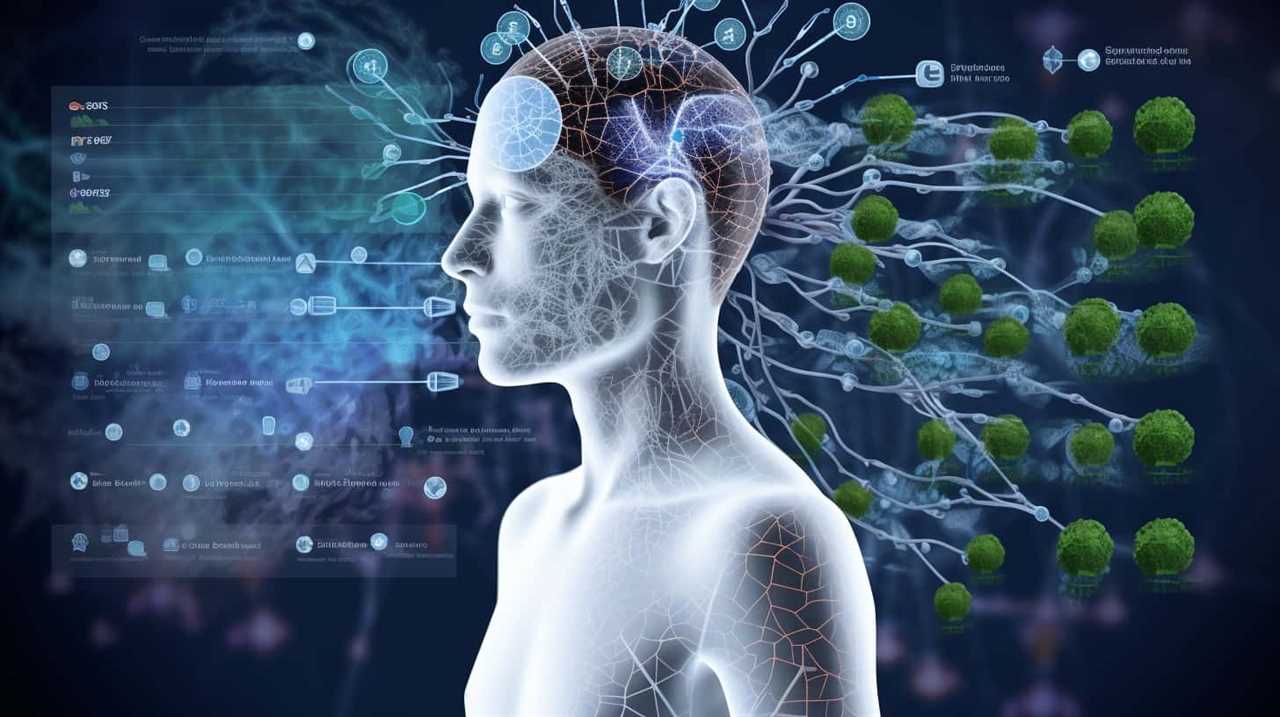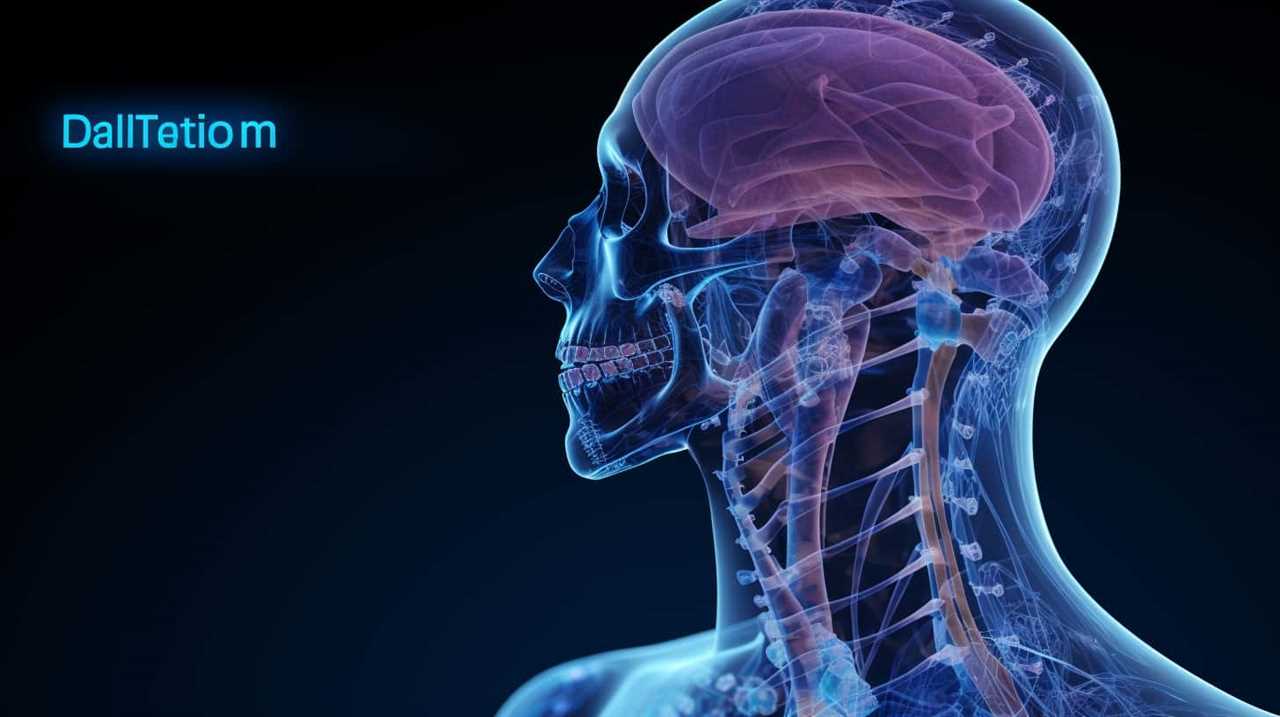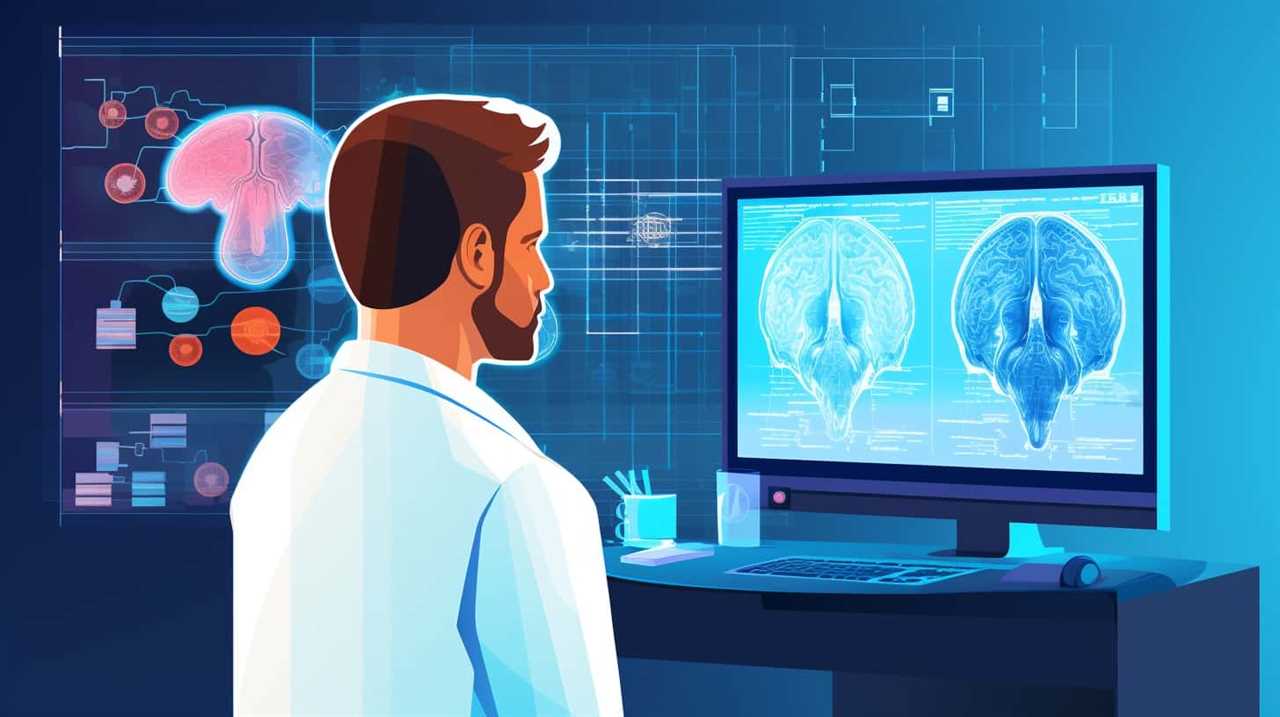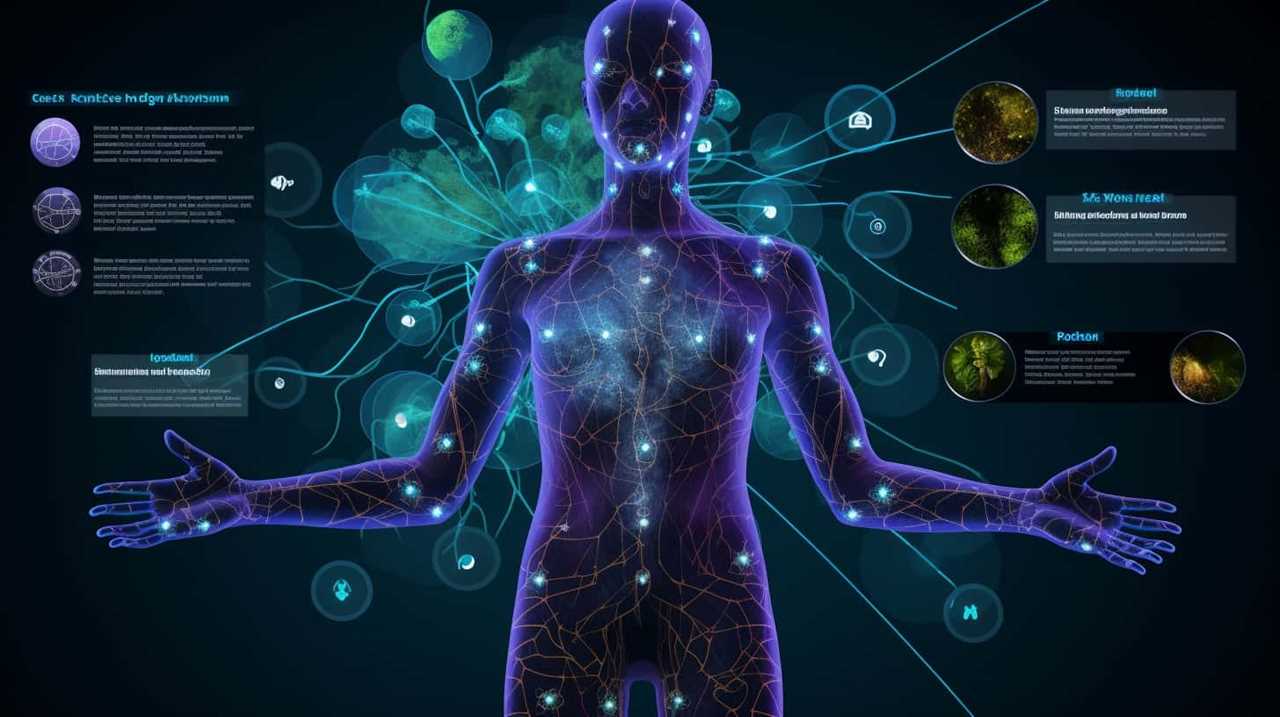We have made significant progress in medical technology. The impact of AI in medical imaging is transforming diagnostics with unprecedented precision.
By harnessing the capabilities of artificial intelligence, we can now detect abnormalities with enhanced precision, pinpoint the exact location of medical conditions, and differentiate tissue types more effectively.
With the ability to analyze health issues quantitatively and streamline workflows for radiologists, this technology is poised to transform the way we diagnose and treat patients.
Get ready for a new era of medical imaging.
Key Takeaways
- Medical imaging AI enables early detection and localization of abnormalities through advanced machine learning algorithms.
- AI algorithms accurately identify and differentiate between various tissue types, improving diagnostic accuracy and treatment planning.
- Medical imaging AI facilitates precise measurement of health parameters, allowing for timely intervention and treatment.
- The streamlined workflow provided by medical imaging AI enhances communication and collaboration among healthcare professionals, leading to improved patient outcomes.

Enhanced Detection of Abnormalities
How can medical imaging AI enhance our ability to detect abnormalities with greater accuracy and efficiency?
Through the implementation of advanced machine learning algorithms, medical imaging AI has revolutionized the field of diagnosis by enabling early detection of abnormalities.
This technology analyzes vast amounts of medical images, such as X-rays, CT scans, and MRIs, with unparalleled precision and speed.
By leveraging deep learning techniques, medical imaging AI algorithms can recognize subtle patterns and anomalies that may not be easily discernible to the human eye.
This early diagnosis allows for prompt intervention and personalized treatment plans tailored to each patient’s specific needs.
With medical imaging AI, healthcare providers can now offer more precise, targeted treatments, resulting in improved patient outcomes and a higher quality of care.

Precise Localization of Medical Conditions
With the enhanced detection capabilities of medical imaging AI, we can now precisely locate medical conditions with greater accuracy and efficiency. This breakthrough is made possible by the integration of automated diagnosis and advanced imaging techniques.
Here’s how medical imaging AI is revolutionizing the precise localization of medical conditions:
- Improved Lesion Identification: Medical imaging AI algorithms can accurately identify lesions, such as tumors or abnormalities, within images, enabling healthcare professionals to precisely locate the affected areas.
- Enhanced Spatial Mapping: By analyzing the intricate details within medical images, AI can generate high-resolution maps of the affected regions, providing healthcare professionals with a comprehensive understanding of the condition’s location.
With these advancements, medical professionals can now pinpoint the exact location of medical conditions, enabling more targeted treatment plans.
Moving forward, let’s explore how AI is also improving the differentiation of tissue types, bringing us even closer to unparalleled accuracy in medical imaging.

Improved Differentiation of Tissue Types
As we delve deeper into the advancements of medical imaging AI, we continue to witness the remarkable improvement in the differentiation of tissue types. This enhanced tissue characterization plays a crucial role in improving diagnostic accuracy and ultimately patient outcomes.
Medical imaging AI algorithms have the ability to analyze vast amounts of data from different imaging modalities, such as MRI, CT scans, and ultrasound, with unparalleled precision. By leveraging machine learning techniques, these algorithms can accurately identify and differentiate between various tissue types, including organs, tumors, and lesions.
To better illustrate the impact of improved tissue differentiation, let’s take a look at the following table:
| Tissue Type | Description |
|---|---|
| Normal tissue | Healthy tissue with no abnormalities |
| Benign tumor | Non-cancerous growth that doesn’t spread |
| Malignant tumor | Cancerous growth that can invade nearby tissues |
| Lesion | Abnormal area of tissue that may require further testing |
With the help of medical imaging AI, radiologists can now rely on more precise and accurate tissue characterization, leading to improved diagnostic accuracy and better treatment planning. This breakthrough technology is revolutionizing healthcare by empowering clinicians with the tools they need to make more informed decisions and provide optimal patient care.

Enhanced Quantitative Analysis of Health Issues
We continue to witness remarkable advancements in medical imaging AI, which have greatly enhanced our ability to quantitatively analyze health issues. The improved diagnosis and personalized treatment made possible by this technology are revolutionizing the field of healthcare.
Here are two key ways in which enhanced quantitative analysis is transforming medical imaging:
- Accurate measurement: Medical imaging AI algorithms enable precise measurement of various health parameters, such as tumor size, organ volume, and blood flow. This quantitative analysis provides clinicians with objective data for making informed decisions about patient care.
- Early detection: By leveraging the power of AI, medical imaging can detect subtle changes in tissues and organs that may indicate the presence of disease. This early detection allows for timely intervention and treatment, improving patient outcomes.

Streamlined Workflow for Radiologists
Our team has discovered a remarkably efficient workflow for radiologists, utilizing the power of medical imaging AI to streamline their processes. By integrating automated diagnosis capabilities into their workflows, radiologists can significantly increase efficiency and accuracy in their work. The use of AI algorithms can aid in identifying abnormalities, analyzing images, and generating detailed reports with speed and precision. This not only saves time for radiologists but also ensures consistent and accurate results, leading to improved patient care. To better understand the impact of this streamlined workflow, consider the following table:
| Traditional Workflow | Streamlined Workflow with AI |
|---|---|
| Manual analysis of images | Automated analysis of images |
| Time-consuming report generation | Instant report generation |
| Potential for human error | Reduced risk of human error |
With this streamlined workflow, radiologists can focus more on critical cases, improve diagnostic accuracy, and ultimately provide better patient outcomes.

Frequently Asked Questions
How Does Medical Imaging AI Enhance the Detection of Abnormalities?
Medical imaging AI enhances the detection of abnormalities by enhancing diagnostics and improving accuracy. It enables us to analyze medical images with unprecedented precision, identifying subtle details and patterns that may be missed by human interpretation alone.
What Benefits Does Precise Localization of Medical Conditions Offer in Diagnosis and Treatment?
Precise localization benefits are invaluable in AI powered diagnosis and treatment. By accurately identifying the location of medical conditions, we can tailor interventions with unparalleled accuracy, leading to improved outcomes for patients.
How Does Improved Differentiation of Tissue Types Through Ai-Powered Medical Imaging Contribute to Patient Care?
Improved tissue differentiation through AI-driven medical imaging enhances patient care by providing accurate and detailed information about different tissue types. This enables precise diagnosis and treatment planning, leading to improved outcomes and personalized care.
Can You ExplAIn How Enhanced Quantitative Analysis of Health Issues Using AI Can Assist in Personalized Medicine?
Enhancing treatment outcomes and revolutionizing healthcare delivery, enhanced quantitative analysis using AI assists in personalized medicine. Precision and accuracy in health issue analysis provide unparalleled insights for better patient care.
How Does the Integration of AI Technology in Medical Imaging Streamline the Workflow for Radiologists and Improve Efficiency?
Integrating AI technology in medical imaging improves diagnostic accuracy and streamlines patient management by automating tasks, analyzing images, and providing real-time insights. This enhances efficiency, allowing radiologists to make faster and more accurate diagnoses.

Conclusion
In conclusion, the power of medical imaging AI is unlocking unparalleled accuracy in the field of radiology.
With enhanced detection of abnormalities, precise localization of medical conditions, improved differentiation of tissue types, and enhanced quantitative analysis of health issues, radiologists can now provide more accurate diagnoses and treatment plans.
Additionally, the streamlined workflow offered by AI technology ensures efficient and effective patient care.
Embracing this cutting-edge technology is crucial for healthcare professionals to stay at the forefront of medical advancements and provide the best possible care for their patients.
Olivia stands at the helm of Press Report as our Editor-in-chief, embodying the pinnacle of professionalism in the press industry. Her meticulous approach to journalism and unwavering commitment to truth and accuracy set the standard for our editorial practices. Olivia’s leadership ensures that Press Report remains a trusted source of news, maintaining the highest journalistic integrity in every story we publish.










